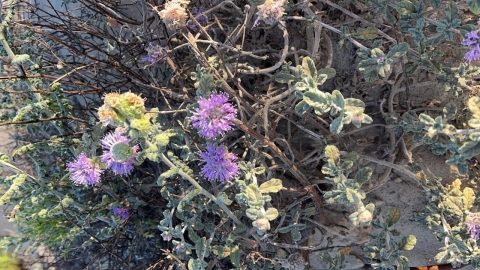Facility Activities
Interpretation
The local Dunes Center, located in the city of Guadalupe, CA hosts a family interpretive hikes, and special events throughout the year. Topics include bird watching, natural history, endangered species, and insects. For more information check out their events page.
Wildlife Observation
National Wildlife Refuges provide the opportunity to view wildlife, especially endangered and threatened species. Guadalupe-Nipomo Dunes NWR will allow you and your family to see over 100 coastal avian species such as the threatened western snowy plover, and over 200 plant species such as coyote mint (Monardella villosa).
Photography
The refuge offers stunning views of several habitat types from steep dune systems to freshwater ponds and beaches. Be sure to bring your camera and check which times of year are best for viewing wildflowers. Please be advised that any photography, or recording, for commercial use requires a Special Use Permit.
Hiking/Exploring
Most portions of the Refuge are open to the public, with seasonal access restrictions enacted during western snowy plover breeding season which run from March 1st to September 30th each year. During the western snowy breeding season, travel through sensitive nesting areas is prohibited; Sensitive areas include the beach and foredunes.
Due to the presence of sensitive habitats and listed species, several wetland areas on the Refuge are currently closed to the public and all the panhandle section along the northern and northeastern portion of the Refuge is closed to public access. Please adhere to all "Area Behind this Sign Closed" signs during your visit to the refuge.
Surf Fishing
Fishing must occur in State waters outside of the refuge boundaries, however anglers can use the Refuge beach to access this area. More than 95% of catch is barred surf perch (Amphistichus argenteus). Please visit the California Department of Fish and Wildlife website for licenses and more information.


